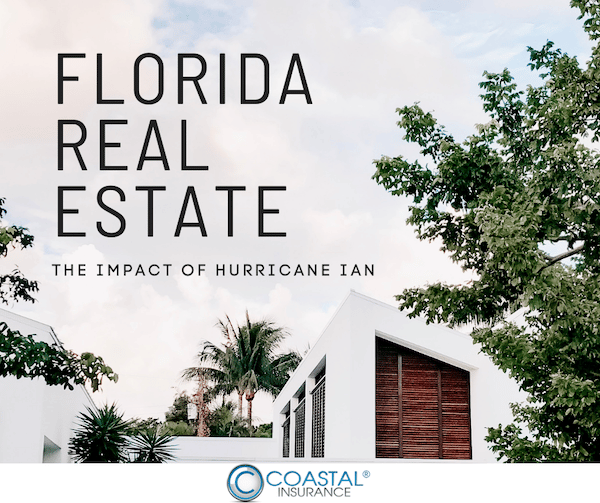
How Much Home Insurance Do I Need?
You have many coverage options when you want to purchase homeowner’s insurance. But how much coverage is right for you? We will assist you to carry out an analysis of your coverage options, so you can make the best decision.
There are many things to consider when purchasing homeowners’ insurance. One of the most critical decisions relates the amount of coverage you require.
What is the purpose of buying home insurance? It is to safeguard you, your assets and your home from unforeseen events. Suppose your home and everything in it is gutted by a fire. In an ideal world, you will have enough coverage to rebuild your home fully and replace all your belongings.
There are a lot of factors that affect your optimal coverage levels, including the home that you reside in and your possessions. This article will address the main components of a home insurance policy and the best coverage levels.
What kind of homeowners’ insurance coverage do you require?
Before we tackle coverage levels let us look at the various types of homeowners insurance
First, there are different types of homeowners insurance, namely:
- HO-1 or basic
- HO-2 or broad
- HO-3 or special
- HO-4 or tenant’s
- HO5 or comprehensive
- HO-6 or condo
- HO-7 or Mobile home
- HO-8 or older home
Every one of these types of policies has its own coverage levels, costs and exclusions. HO-3 is the most common type of insurance and it is the best home insurance policy for a normal homeowner. A HO-3 policy will cover the structure of your house, your personal possessions and your liability.
Why is HO-3 preferable to a HO-1 or HO-2? Because it covers damages from any type of eventuality that is not excluded specifically, and this means it covers more occurrences. In addition, a HO-3 insurance policy is not significantly costlier than a HO-1 or HO-2 policy. The difference in the level of coverage more than makes up for the price differential.
Because HO-3 is the most popular type of policy, this article will concentrate on a HO-3 policy. Even though you might find that HO-3 is not suitable for your needs, most of the other policies have much the same coverage options. The article will assist you to select the right coverage levels irrespective of your HO form.
Now, let us analyze what makes up your homeowners’ insurance policy.
What amount of homeowners’ insurance coverage do you require?
A homeowner’s insurance is comprised of four main elements:
1. Structure/dwelling coverage-this provides coverage for the physical structure of your house. The foundation, walls, roof and all other related materials inside
2. Personal property or possessions assets coverage-this covers the items inside your house, for example furniture, computers, clothes and so on.
3. Liability coverage-you are responsible for ensuring a reasonably safe environment for those living in your house. Liability coverage provides protection against legal complications in case a person suffers injury while they are on your property. Injuries can mean anything from falls to dog bites. If a court finds you liable for somebody else’s injuries, your assets may be at risk.
4. ALE (Additional living expenses) -in case your house is rendered unlivable as a result of a covered occurrence, ALE will assist you to cater for the costs of food, temporary housing and other related expenses.
That is the basic review of a home insurance policy. Then, what coverage amount is appropriate for your needs? We will talk about the best coverage levels for the four major principles of home insurance:
Dwelling and structure
You need dwelling or structure coverage to fully rebuild your house from scratch. As such, you will be required to calculate the replacement cost of your home, which is no easy task. Avoid making the mistake of assuming that the replacement value of your house is equivalent to its value. The replacement cost does not consider the market value of your home or the land it is built on. It is basically the cost of rebuilding your house, including labor and materials.
Personal possessions/property
The amount of structure coverage is crucial because it forms the basis of other coverage types, including property or personal possessions coverage. Policies normally set the coverage for possessions between 50% and 75% of the policyholder’s dwelling coverage. This is enough for most people.
It is best to make an inventory list to establish if it is enough for your needs. Make an estimation of the total value of all your possessions. Do you have adequate property coverage to replace them? In addition, do you own any high value items? Individuals with high value items can use insurance riders to enhance their coverage.
The way your items are valued is one important feature of your possessions coverage. To put it in another way, how much will your insurance company give you if your items are destroyed or stolen? There are two ways of dealing with this question-actual cash value (or ACV) or replacement cost. Replacement cost is basically the price of buying a brand-new item to replace the one that has been lost or destroyed. In contrast, actual cash value takes market value and depreciation into account.
Assume your couch, which you bought 5 years ago for $1,500, is burnt down in a house fire. Under replacement cost, the insurer will reimburse you the full cost of 1,500. If ACV is used, the insurance company factors in depreciation and the market value. For instance, they might price your loss at $800 because the couch is five years old.
Clearly, replacement provides better protection for your possessions, but the added layer of protection comes at a cost. This means replacement cost policy is costlier than an ACV policy. If your finances allow it, always go for replacement cost policies.
Liability coverage
Liability coverage normally starts at $100, 000, which looks like a lot of money, however, you can easily exhaust the whole amount in case you need to utilize your liability coverage. In simple terms, lawsuits are costly. We advise that the liability coverage you should buy should be worth a minimum of $300,000. The liability cost difference is not huge considering the benefits accrued.
Additional liability is mandatory in case you own huge assets and other properties. If it is required, you can buy an umbrella policy to boost your liability protection. This will be discussed further below.
Additional Living Expenses
ALE (additional living expenses) coverage is like possessions coverage because it is based on the dwelling coverage amount. In Addition, it is limited, subject to your HO form:
- HO-2 – 30% of the dwelling limit
- HO-3 – 30 % of your dwelling limit
- HO-4-30% of personal belongings limit
- HO-5-30% of dwelling limit
- HO-6-50% of personal property limit
- HO-8-10% of dwelling unit
The figures given above are insurance limits. Insurers normally set the coverage of ALE at around 20% of the structure/dwelling coverage. When it is 20% and your dwelling coverage is set at $300,000, the amount in ALE will be $60,000. Luckily, most of the people will never be required to utilize their additional living expenses.
Additional Home Insurance policy options
Bear in mind that every person, house and city is unique. This means it is just not possible to adopt a universal approach when it comes to home insurance. For this reason, there are various coverage options on the market apart from the standard policies, including:
Flood insurance
It is a common misunderstanding that flood damage is covered by home insurance. The correct position is that flood insurance must be bought separately. Research and find out if your city is susceptible to flood. You must get proper coverage if your house is at risk of flood damage. Note that you are still at risk of flooding even if you reside in an area that is considered safe. NFIP (National Flood Insurance Program) reports that about a quarter of flood damage claims originated from places with moderate or low flood risk.
If you are paying for a mortgage on a house in an area that is susceptible to flooding, your lender will insist on flood insurance. The coverage amount required is equivalent to the replacement cost of the house. Even if your home is situated in an area that is not prone to flooding, it is still necessary to purchase flood insurance. We suggest that you purchase coverage that is equivalent to the value of your house and all possessions in it. You can buy flood insurance from private insurance firms or from NFIP.
Other structures
A lot of standard home insurance policies do not provide coverage for structures other than the home itself. Examples of such structures include sheds, detached garages and gazebos. In case your property has such structures, ensure they are covered.
Umbrella coverage
As mentioned earlier, people with huge assets will require additional liability. If you need additional protection you can buy an umbrella policy, a policy add-on that provides coverage for financial damages that go beyond your liability limit. An umbrella policy is a great option when you consider the potential costs of lawsuits.
Riders:
Most policies give belongings coverage between 50 and 70 percent of your dwelling/structure coverage. This is enough for a lot of people. But you may need added coverage if you own unique items, art pieces, antiques, jewelry and other such valuables. For this reason, buy an endorsement or insurance rider.
Check the numbers again even when you are convinced that you have enough coverage for your belongings. Most home insurance policies have limits for specified items. For instance, your policy may only give jewelry coverage for $1500. In theory, your belongings coverage may be adequate for all your possessions, but you will not be fully covered if you own jewelry worth over $1,500.
How much should the deductible on your home insurance be?
When you buy home insurance you determine the deductible you want to pay. The deductible is the money you pay from your own pocket when filing a claim. For instance, if the deductible is $2000, you will pay this sum before your insurance cover pays the balance.
Several policies set your deductible as a proportion of the replacement cost. Therefore, if your home is insured for $200,000 and your deductible is 1%, you will pay a $2,000 deductible. It is possible to vary the deductible, but this will change your premium.
What is the right deductible amount? You first need to look at your budget. Insurance plans that have high deductibles have low monthly premiums. While this might appear to be a good thing you can lose money eventually due to the steep out-of-pocket costs.
Think about several factors. Can you afford to pay for minor damages from your own pocket? Do you have an aversion to risk? Do you have a history of filing claims? Is the area you live in crime-prone or disaster-prone? Choose a deductible that functions in two ways. Firstly, it will not bankrupt you when you must make a claim. Secondly, it will not increase your premiums drastically.
There are many things to consider. Choosing a deductible is a matter of personal choice.
Home Insurance FAQ’S
Question: legally, is there a set minimum figure when buying home insurance?
Answer: Homeowners are not required by law to insure their houses, unlike auto insurance. But mortgage companies and lenders always insist on insurance coverage. This is because they still own a portion of the house until it is fully paid off. The insurance is required to safeguard their investment.
The coverage level required is normally a minimum portion of the mortgage loan figure. Mortgage companies will also demand additional risk coverage if for example you reside in an earthquake or hurricane-prone area. If the house sits in a designated flood plain area, the lender will need you to buy flood insurance.
In law, there is no requirement to buy homeowners insurance if you fully own your home. But it is a bad idea to neglect to obtain this coverage.
Question: How can I tell if my homeowners’ insurance is adequate?
Answer: Use a math equation to work this out. Assume there is a fire and your house, and all your personal possessions are totally razed to the ground. Is your coverage enough to replace and rebuild everything? At the end of the day this is the purpose of insurance.
Compute the replacement cost of your home. Is the structure/dwelling coverage enough to rebuild your home from scratch? Likewise, make an inventory list of all your belongings. Can your personal property coverage replace all items on the list?
You must also think about your liability levels. Can they adequately protect you from lawsuits? Liability is particularly crucial where you own significant assets.
If possible, you will have adequate home insurance to allow you to go back(somewhat) to your normal lifestyle if your home becomes unlivable. Keep that in mind when you are trying to buy home insurance.
Question: My mortgage company/lender insists upon insurance coverage. Is the coverage they require enough?
Answer: The insurance coverage level required by your lender is there to safeguard their investment only. When you have not paid up fully for your home, the insurance required is enough for the balance you owe. But it does not cover the equity you own on the home.
In addition to that, your lender is a loss payee’ on the policy. As a result, they have the priority when it comes to claim payouts. You will only be paid after they have received their cut.
To be specific, do not assume that you have enough coverage because you bought the amount demanded by your lender. To get complete coverage, you need to buy additional insurance.
Question: how can I determine the replacement cost of my home?
Answer: It is not possible to compute your home’s replacement cost to the penny. Labor costs are constantly changing, and they constitute a big portion of the replacement cots
But it is possible to estimate the replacement cost of your home using several different methods, namely:
- Engaging the services of an appraiser
- Employing replacement-cost calculation software
- Consulting a local contractor to get you an estimate
- Carrying out your own calculations
- Obtaining quotes from various insurance companies and making a comparison of their rates
It is advisable to try several of the methods listed above. This will assist you to know the assortment of replacement cost values attributed to your house. You will then be able to evaluate if your existing replacement cost figure is correct.
Question: Am I required to buy flood insurance?
Answer: If the area you reside in has been designated as a flood plain, then it is necessary to have flood insurance.
However, buying flood insurance is advisable even if you do not reside in a flood plain area. Low risk flood insurance is relatively cheap, starting at $499 annually. In addition, a lot of people residing in low-flood risk areas have experienced flood damage. FEMA estimates that a quarter of all flood insurance claims are filed by people residing in low or moderate flood-risk areas.



![IBA Top Retail Brokers 2024 Medal[88] IBA's Top Retail Broker 2023](https://coastalinsurancesolution.com/wp-content/uploads/2024/07/IBA-Top-Retail-Brokers-2024-Medal88.png)



